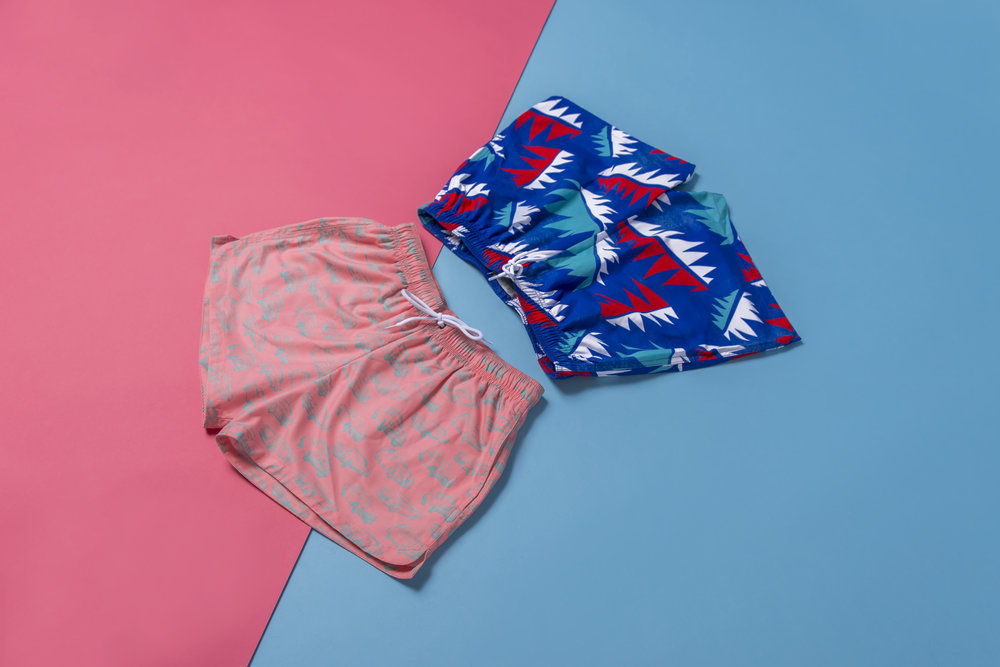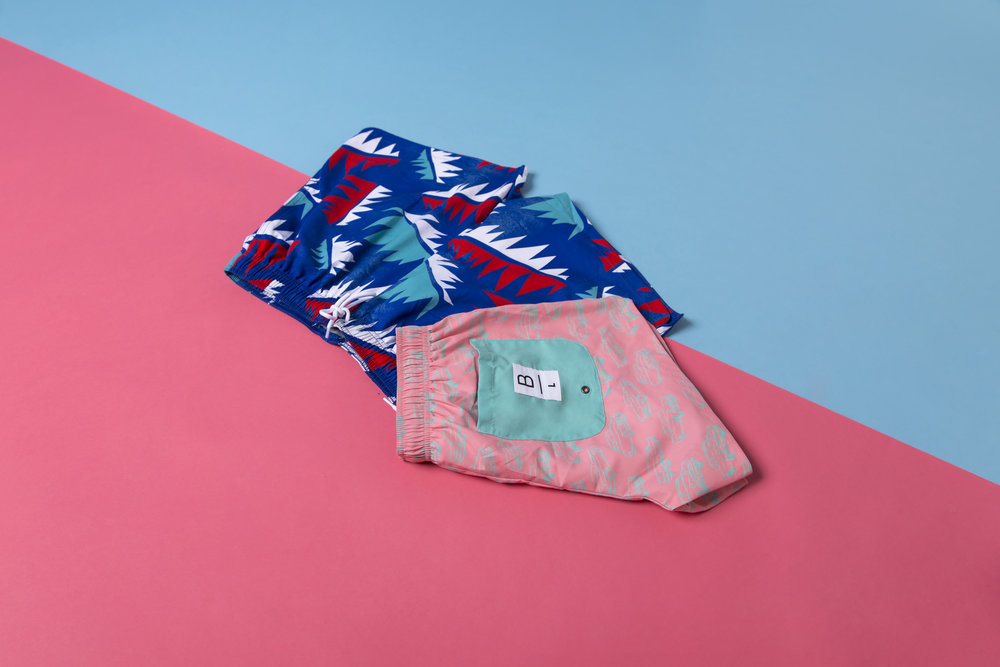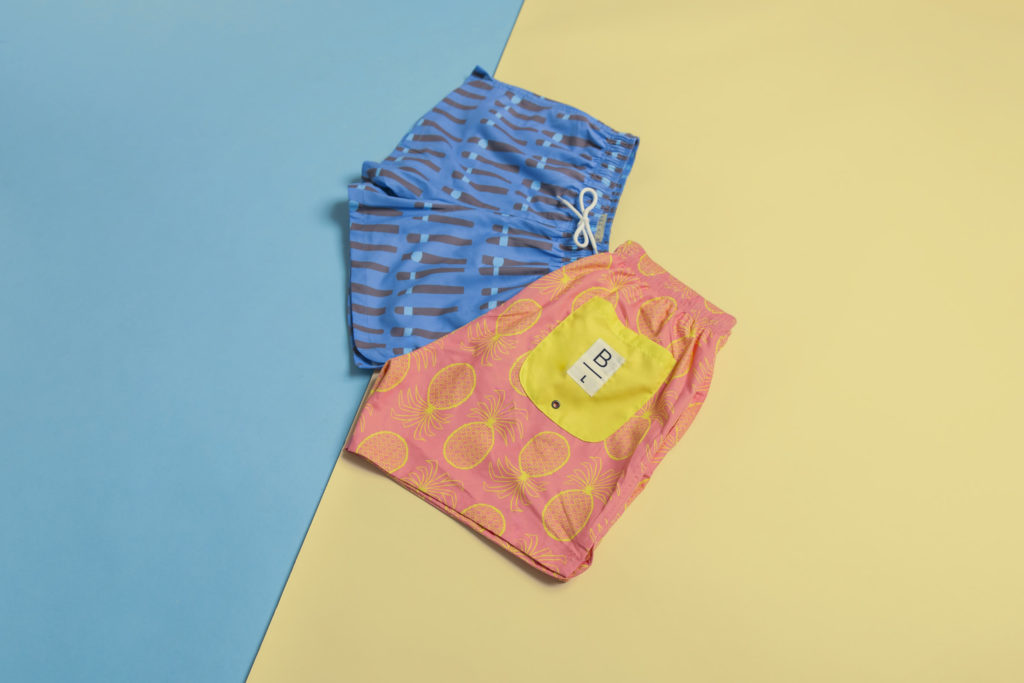Who is Caspar Wood and what is your background?
I spent most of my childhood with my mother and sister because my father was a business man and wasn’t around much. Since I was just eight or nine years old, my mom and sister were always commenting on what I was wearing which really rubbed off on me and put a seed in my brain at a young age. For example when I was eight years old on my way to school wearing a red t-shirt with orange trousers, my sister told me that I couldn’t go to school like that because red doesn’t go with orange. That really stuck with me and I’ll never forgive her.
When I was ten years old, clothing became important to me. I was constantly thinking about the latest trends, what I wanted to wear, what was cool or not cool. Like most people at that age I didn’t really know what I wanted to do or where I wanted to be. I thought I wanted to be a footballer like most kids in England— but then at some point I realized that’s not going to happen. I’ve always envied people who knew what they wanted to do from a young age.
How did you get started?
I started working in marketing agencies but I didn’t have an idea of a career. Once I graduated I went to work in Miami which was more fun for a holiday than for work. I then came back to London and worked at a sample making atelier for high end clients. I saw the early processes of starting a clothing brand and met some really cool people around my age who were also finding their footing in their career who were able to help me and give me advice. I learnt about sourcing fabrics, finding a manufacturer, grading sizes among many other things. I started writing down ideas and I kept it very secret incase nothing would come of it, but with time it became more real and I started spending money. Once you spend money, you have the element of pride and you feel that you must make it happen. It got to the point that it was out-of-hand in a good way and it became a business.
How does it feel to have your own business?
I never ever thought I’d start my own business and I wasn’t one of these people thinking I would be an entrepreneur. I find the term entrepreneur arrogant, so I don’t like to refer to myself that way. But when you have other people saying there’s a gap and a market, and you already have this idea— then you start to think, how can I make something of it?

Why swimwear?
When I was in university at 21 years old, we were planning to go away for summer holidays and my friend wanted shorts to express his individuality but couldn’t find anything unique that he could afford. Fashion is a way to express your individuality. It doesn’t matter what you buy or how much you spend, but as soon as you see someone else wearing the same thing, it can be frustrating. To me, swim shorts are a great outlet for self-expression, because they’re not an item of clothing that you see every day— especially when you live in London. I think of holiday as a time when you have no inhibitions and it doesn’t matter who’s there and who’s watching, and you can wear whatever you want.
Do you have any background in design?
I’m not the designer. My partner in the company, Sam, does the design part. This is my brainchild, and I have creative license over what goes out, but we come up with the designs together as a group. It was important for me to find someone to work with who could put my ideas on to paper because I can’t draw.
Was it a difficult process to find the right person?
I probably got lucky. When setting up a fashion label you need to use as many contacts as possible in design, tech, manufacturing etc. because everything is effectively built on trust and to have a good product, you need to be able to trust the people you are working with. If you start to work with people based on recommendations or those you’ve already worked with or you know you can trust, then you have a good foundation. When all the ideas are coming from my head it can be challenging to instruct a designer or manufacturer how it needs to be, so it’s necessary to be somewhat flexible. I think I’m quite picky and know what I want which is important because if you don’t love your product, you can’t expect anyone else to love it. But together with that, you need to know that you can rely on your team to make good decisions and that you’re on the same wavelength to achieve a good relationship and end-product.

What do you want to communicate about your product and brand that you want people to know?
Our first USP (unique selling proposition) was fun, vibrant, printed swim shorts, to appeal to the middle market— to those who don’t want to shop at high street brands but can’t afford to shop at the premium swimwear brands. We are thinking of the consumers in London who will wear this product no more than five times a year and we therefore wanted to bring the price down and make it more affordable. We can charge twice as much as we do for our products, but we see longevity in our business model and therefore don’t need to do that.
We also found that a lot of the swimwear brands that create printed shorts sell a wide range of random collections without much identity to them— but we wanted to create something more coherent. Because there are no beaches in London, we wanted to bring the world’s beaches to us, by creating collections with an actual identity related to exotic coastal cities around the world. Our first collection is Havana inspired (think cigars, classic cars, pineapple and the Cuban flag) and includes four prints in two lengths. We create an identity that can last a full season and build our market and communication around it. After a season has run its course we have a new theme which keeps things fresh. It’s hard to find a brand that is doing anything remotely similar at the moment.
Tell me about your charity work and how your customers are involved.
Today, customers and retailers are looking to stand out. We were inspired by brands that are based on social responsibility and we felt that if we are taking inspiration from these cities- we want to thank them for giving us the inspiration, by donating 5% from each sale to charity.
We partnered with GlobalGiving which is an American worldwide charity based in Florida. We are not giving 5% of our profit which is what many others do, but rather 5% of every purchase goes to an important fund. When we change to a new city next season, we’ll partner with a relevant fund that GlobalGiving is connected to.
How do you choose which cities to feature each season?
We are focusing on coastal cities to bring exotic life to London. We started with Havana because it’s a very authentic, fun place with a big impact, and is also changing very quickly— this was an opportunity that may not be so relevant a few years down the line. We also wanted to create a bright vibrant product and the colors of the city are amazing. The question is where do we go from there? We don’t want something too similar, so we might go to the other side of the world.
I’m guessing you would consider places like Rio, Brazil.
Yes, but we don’t want to go too Latin again, so Rio would be right a couple of years down the line. I spent time in Brazil two years back and I loved it— every city is so different— the south and north feel like two different countries completely. But for now, we’re thinking maybe Capetown, SA, then up to Asia, Malaysia, Thailand and the Philippines. In order to establish the brand properly it was important to start with a city that is identifiable, and that’s the aim for the next season and possibly the season after that. We want shoppers to look at it and automatically think Havana. We don’t want to lose that which is what we’re about.
You mention on the website that you can wear the swimsuit for a London lido. Have you ever considered featuring landlocked cities in your collection?
Yes, at the start we thought of New York. We’d also love to do a London collection because it would probably do really well. Certainly, in the future we would love to expand but it was important at first to go coastal, and bring the beaches to London.

Who is your primary target market— is it an international shopper or just for the British?
Our ambitions are global but we are based in London and we need to start small. London is very powerful when it comes to fashion— if you can establish and name for yourself here, that starts to snowball, and you can get to a good place. I’m a Londoner since birth and have been here my whole life so I know that the target market for our product is young professionals. Life is expensive, and money isn’t easy— and yet, it doesn’t matter if there’s a recession because people will still go on holiday. We want to crack the London market, the UK market, and then look forward to international retailers. At present we ship worldwide, and we’ve had orders from all over the world including Canada, Malta, Asia, and many others.
You mention young professionals— are they fashionistas?
They are fashionistas but may not consider themselves that way. People who don’t care about what they wear may not buy our product because even though we are very affordable compared to our competitors, not everyone wants to spend money on clothing. But as times are changing, and less businesses in London require a suit to go to work, people are paying more attention to brands and fashion which then naturally extends to what they wear on holiday.
Do you think you’ll expand beyond swimwear?
We’d love to expand to women’s swimwear but I’m not sure how close that is. I think of the two year process it took to start the brand and to design a product that I wear— but I’ve never worn a bikini so I wouldn’t know where to start! But the feedback I get from female friends is the same as the men— that there are not enough brands that they can afford. From there, who knows? I would keep it to beach life with accessories such as towels with our prints, beach bags etc. But for now, we will be a swimwear brand.
What are the biggest satisfactions in doing what you do?
I think that a lot of people who start up their own businesses will tell you that they set a target and then feel so satisfied when reaching a milestone— but for me it’s different. When I set a goal in my head, I think about the next thing. It pains me that it will probably never ever stop— that I will always want more— which can be frustrating because I don’t ever get too comfortable and I’m always looking for ways to improve. The biggest satisfaction was when the first person I never heard of (not a friend or family member) purchased our shorts. Then celebrities expressed interest. I’m looking forward to a time that I go on holiday and see someone wearing my shorts.
What has been the biggest difficulty of running your own operation?
We’re still in the early days. There have been many occasions throughout the setup of the business where it was almost easier to throw in the towel. It has been hard but rewarding to keep trekking and to see how it can be worth it. I always need to be focused on what’s next and what I’m doing, which can be challenging because I do all the operations and everyday tasks myself. When I go into a down period of doubt, there’s always something to trigger me back so it doesn’t really last very long.
Where do you see Beeches in five years from now?
I’d love to be the Havaianas of swim shorts— the go to for holidays. I’m not sure if we’ll be there in five years, but who knows? I’d love for us to run as a viable business, make good money, make a difference in the world, all while staying true to our brand identity by bringing loud and vibrant prints to the market, inspired by really cool places around the world. I don’t see another brand doing anything like that, but maybe they’ll read this and start doing it! I hope one day we will be the go-to brand where people say: “I need swim shorts, I’m going to buy Beeches.”

